 Last week the Wyss Institute for Biologically Inspired Engineering at Harvard University awarded its Founding Director and Lab on a Chip Editorial Board member, Donald Ingber, M.D., Ph.D., the 2011 Holst Medal in recognition of his pioneering work exploring the cellular mechanisms that contribute to mechanical control of tissue and organ development, and his groundbreaking development of bioinspired technologies, ranging from organ-on-chip replacements for animal studies, to new engineering approaches for whole organ engineering.
Last week the Wyss Institute for Biologically Inspired Engineering at Harvard University awarded its Founding Director and Lab on a Chip Editorial Board member, Donald Ingber, M.D., Ph.D., the 2011 Holst Medal in recognition of his pioneering work exploring the cellular mechanisms that contribute to mechanical control of tissue and organ development, and his groundbreaking development of bioinspired technologies, ranging from organ-on-chip replacements for animal studies, to new engineering approaches for whole organ engineering.
The award was presented on December 16th at the High Tech Campus Eindhoven in the Netherlands during a ceremony at the close of the 2011 Holst Symposium, which focused on integrated heart repair. As the medal winner, Ingber also presented the 2011 Holst Memorial Lecture entitled “From Cellular Mechanotransduction to Organ Engineering.” Starting with an exploration of the role that cell structure and mechanics play in controlling tissue and organ development, Ingber’s lecture extended to provide a more comprehensive overview of his most recent innovations, including development of organ-on-chip microsystems technologies that recapitulate human organ functions, bioinspired materials that promote whole tooth organ formation, and injectable programmable nanotherapeutics that restore blood flow to occluded blood vessels.
“Donald Ingber has made groundbreaking contributions to the understanding of the mechanobiology of cellular behavior,” said Joep Huiskamp, Secretary of the Holst Memorial Lecture Award Committee 2011, on its behalf. “Ingber’s recent development of a breathing lung-on-a-chip concept is an outstanding example of convergent technologies.”
This year’s Holst events were dedicated to the global health issue of heart disease, in recognition of its enormous emotional, medical, economical, and societal implications. The symposium brought together a few select leading international experts, including Wyss Institute core faculty member Kevin Kit Parker, Ph.D., to discuss key facets of heart disease, regeneration, and repair. Parker’s work on engineering heart tissues recently featured on the Issue 24 cover of Lab on a Chip (see Ensembles of engineered cardiac tissues for physiological and pharmacological study: Heart on a chip).
Donald Ingber, together with Lab on a Chip Chair George Whitesides, will be guest editor of our final 10th Anniversary issue focusing on the USA which has the theme of translating research from the lab to the clinic, to be published next year.
Adapted from the Wyss Institute press release
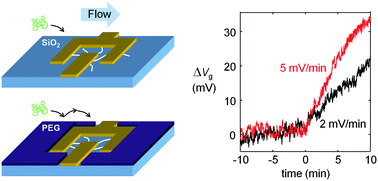











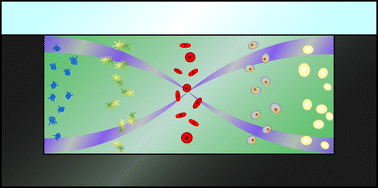 We’ve now published the 8th article is our
We’ve now published the 8th article is our 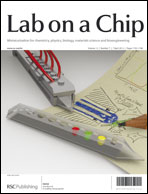 Issue 7 is now available online, and the outside front cover features a HOT article by Aldo Jesorka and colleagues at Chalmers University of Technology, describing their use of a hydrodynamically confined microflow pipette as an optimized non-contact open-volume microfluidic tool, to overcome the common restriction of using closed microchannels.
Issue 7 is now available online, and the outside front cover features a HOT article by Aldo Jesorka and colleagues at Chalmers University of Technology, describing their use of a hydrodynamically confined microflow pipette as an optimized non-contact open-volume microfluidic tool, to overcome the common restriction of using closed microchannels. The inside front cover is a Critical Review by David Beebe et al., discussing the use of PDMS and polystyrene by researchers working at the interface of microfluidics and cell biology research:
The inside front cover is a Critical Review by David Beebe et al., discussing the use of PDMS and polystyrene by researchers working at the interface of microfluidics and cell biology research: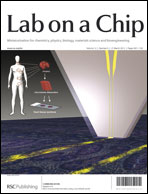 Issue 6
Issue 6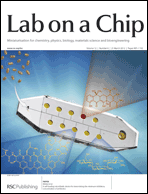 The inside front cover features another HOT article, from Douglas Weibel and colleagues at the University of Wisconsin-Madison and the University of California, San Diego, describing very simple, portable microfluidic technology for determining the minimum inhibitory concentration of antibiotics.
The inside front cover features another HOT article, from Douglas Weibel and colleagues at the University of Wisconsin-Madison and the University of California, San Diego, describing very simple, portable microfluidic technology for determining the minimum inhibitory concentration of antibiotics.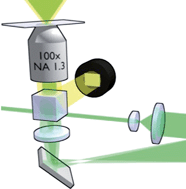 Holographic optical tweezers and their relevance to lab on chip devices
Holographic optical tweezers and their relevance to lab on chip devices  Optoelectrofluidic platforms for chemistry and biology
Optoelectrofluidic platforms for chemistry and biology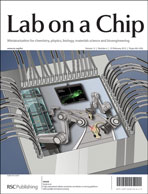
 On the inside front cover is another hot article, this time from Katsuo Kurabayashi who has developed a vapor preconcentrator/injector for microscale GC.
On the inside front cover is another hot article, this time from Katsuo Kurabayashi who has developed a vapor preconcentrator/injector for microscale GC.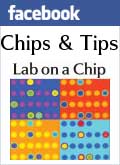
 The recent LOC article from Douglas Weibel and team at the University of Wisconsin-Madison has been highlighted on MedGadget. The article describes a new portable self-loading technology for determining minimum inhibitory concentration values, vital in clinical bacteriology for determining whether an organism is reported susceptible or resistant.
The recent LOC article from Douglas Weibel and team at the University of Wisconsin-Madison has been highlighted on MedGadget. The article describes a new portable self-loading technology for determining minimum inhibitory concentration values, vital in clinical bacteriology for determining whether an organism is reported susceptible or resistant.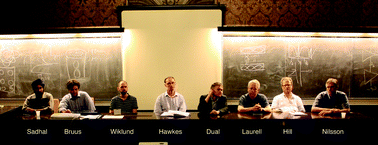 A little while ago Henrik Bruus, Jurg Dual, Jeremy Hawkes, Martyn Hill, Thomas Laurell, Johan Nilsson, Stefan Radel, Satwindar Sadhal and Martin Wiklund met at the International Centre for Mechanical Sciences in northern Italy to give a lecture series on the theory and applications of ultrasonic standing wave technology and microfluidics. Out of this the idea for a series of tutorial papers was born, and Lab on a Chip is delighted to bring you the first few in the series:
A little while ago Henrik Bruus, Jurg Dual, Jeremy Hawkes, Martyn Hill, Thomas Laurell, Johan Nilsson, Stefan Radel, Satwindar Sadhal and Martin Wiklund met at the International Centre for Mechanical Sciences in northern Italy to give a lecture series on the theory and applications of ultrasonic standing wave technology and microfluidics. Out of this the idea for a series of tutorial papers was born, and Lab on a Chip is delighted to bring you the first few in the series: Last week the
Last week the